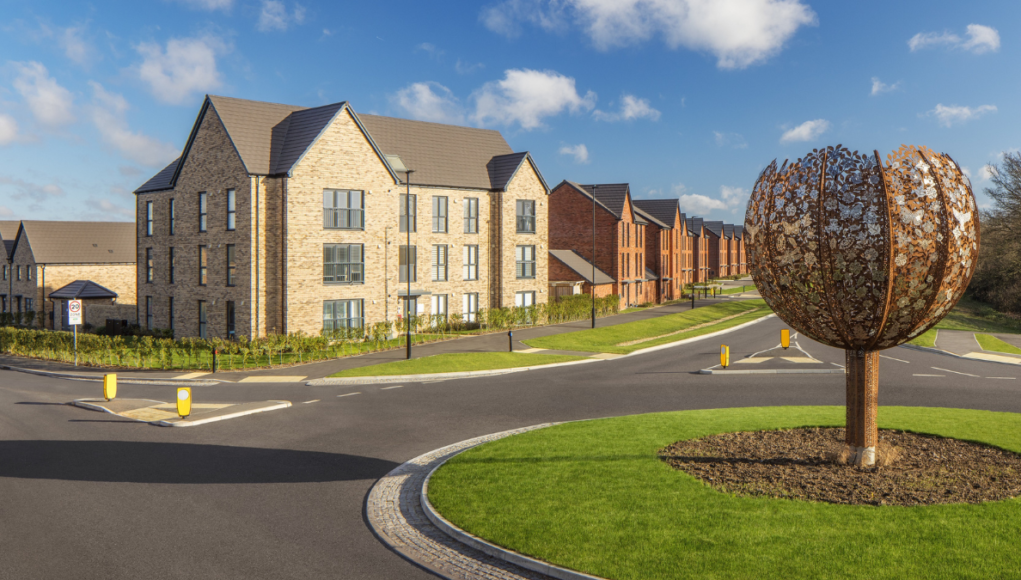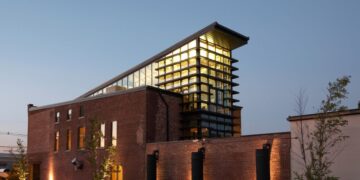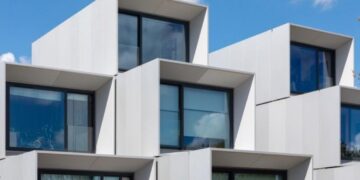In an increasingly digitized and fragmented world, the role of physical space in fostering human connection has never been more critical. Traditional urban planning often prioritized efficiency and commerce, leading to isolated suburbs and sprawling, soulless commercial zones. However, a new architectural movement is emerging, centered on the profound belief that buildings should be more than just structures; they should be catalysts for social interaction and a foundation for thriving communities. This article will delve into the core principles, innovative strategies, and transformative benefits of creating community-focused spaces. We will explore how architects and urban planners are reimagining our built environment to promote social cohesion, well-being, and a shared sense of belonging, proving that thoughtful design has the power to bring people together and build a more resilient society.
The Foundational Principles of Community-Centric Design

Community-focused design is not a single aesthetic but a holistic philosophy that places people and their interactions at the center of the architectural process. It is built on a foundation of interconnected principles that address the human need for connection, belonging, and shared experience.
A. Inclusivity and Accessibility: A true community space is open and welcoming to everyone, regardless of age, ability, or background. This principle is at the heart of inclusive design, which ensures that a space is easily accessible to people with disabilities, and that its features and amenities can be enjoyed by a diverse group of users, from children to the elderly.
B. Flexibility and Adaptability: A community space should be a dynamic entity that can evolve and change with the needs of its users. This means designing for flexibility, with features like movable furniture, multi-functional rooms, and open layouts that can be easily reconfigured to host a variety of events, from a farmers’ market to a community meeting or a public concert.
C. Safety and Comfort: People are more likely to gather and linger in spaces where they feel safe and comfortable. This involves designing for good visibility, with ample lighting and open sightlines, and creating a comfortable microclimate through strategic shading, seating, and landscaping. The goal is to make the space feel secure and inviting at all times of the day.
D. Encouraging Serendipitous Encounters: The most powerful community-focused spaces are those that facilitate spontaneous interactions. This is achieved by designing pathways and public areas that naturally bring people into close proximity with one another, creating opportunities for casual conversation and unplanned encounters.
Strategic Architectural and Urban Planning Applications
Translating these principles into a tangible built environment requires a number of strategic architectural and urban planning applications. These methods are transforming our cities from a collection of isolated buildings into a network of interconnected community hubs.
A. Creating Third Spaces: In urban planning, a “third space” is a place outside of home and work where people can gather, socialize, and build a sense of community. This can be a public library, a park, a community garden, or a neighborhood cafe. Architects are designing these spaces to be comfortable, inviting, and easily accessible, serving as the social heart of a neighborhood.
B. Mixed-Use Development: The traditional separation of residential, commercial, and retail zones has contributed to urban isolation. The new trend is to design mixed-use developments that integrate all these functions into a single building or complex. This creates a vibrant, 24/7 environment where people can live, work, and socialize without the need for extensive travel, fostering a more walkable and connected community.
C. The Role of Placemaking: Placemaking is a collaborative process that uses a community’s assets, inspiration, and potential to create high-quality public spaces that people want to use and linger in. It involves engaging with the local community to understand their needs and desires, and then using this knowledge to design a space that is a true reflection of its users. This can include anything from adding public art and street furniture to organizing a community garden.
D. Designing for Nature and Well-being: A strong connection to nature is crucial for human well-being and is a powerful catalyst for community building. Community-focused designs often include green spaces, public gardens, and open areas that allow for interaction with the natural world. These spaces can be used for everything from a picnic to a public yoga class, bringing people together in a shared natural environment.
The Transformative Power of Community-Focused Spaces
The benefits of creating community-focused spaces extend far beyond aesthetics. They have a profound and measurable impact on the health, well-being, and resilience of a society.
A. Enhanced Social Cohesion: When people have a place to gather and interact, they are more likely to form social bonds and trust their neighbors. This leads to a stronger sense of community and a more cohesive social fabric, which is essential for a healthy and resilient society.
B. Improved Public Health and Well-being: Community spaces that are designed for walking, recreation, and social interaction can have a direct and positive impact on public health. They can encourage physical activity, reduce loneliness and social isolation, and provide a sense of belonging that can lead to a significant improvement in mental health.
C. Economic Vitality: A vibrant community space is a powerful economic engine. It can attract new businesses, increase property values, and create a strong sense of place that makes a neighborhood more desirable. People are more likely to support local businesses in a community where they feel connected and engaged.
D. Increased Resilience: A strong sense of community is a key component of a society’s resilience. When people know their neighbors and have a place to gather, they are better able to support each other during a crisis, whether it’s a natural disaster or a public health emergency.
Case Studies and Future Trends

The principles of community-focused design are being applied around the world, from small-scale projects to massive urban redevelopments. These projects serve as a blueprint for the future of urban planning and architecture.
A. Reimagining Public Spaces: From the revitalization of waterfronts to the transformation of abandoned railway lines into public parks (such as the High Line in New York City), urban planners are giving new life to underutilized public spaces. These projects often become a city’s most beloved and well-used community assets.
B. The Community Center as a Hub: The modern community center is no longer just a place for meetings. It is a multi-functional hub that houses a library, a food bank, a co-working space, and a cultural center, all under one roof. These centers are designed to be a one-stop-shop for a community’s social and civic needs.
C. The Rise of “Micro-Community” Architecture: On a smaller scale, architects are designing buildings that are self-contained micro-communities. This can be a residential building with a shared rooftop garden, a community kitchen, and a co-working space, all designed to foster interaction among the residents.
D. Integration with Technology: Technology will play an increasingly important role in community-focused design. Smart systems can be used to manage public events, provide real-time information on community services, and even help people connect with their neighbors. The challenge will be to use technology to enhance human connection, not to replace it.
Conclusion
The architecture of the future will be a testament to our profound need for human connection. The movement to create community-focused spaces is not a passing trend but a fundamental re-evaluation of the purpose of our built environment. It is a powerful reminder that the most beautiful and successful buildings are not those that stand in isolation but those that serve as a foundation for a shared sense of belonging. By integrating principles of inclusivity, flexibility, and safety, and by applying strategies of placemaking and mixed-use development, we are creating a new generation of urban spaces that are more resilient, more sustainable, and more deeply attuned to the human spirit.
The long-term impact of this architectural philosophy will be immense. It will lead to healthier communities, a more vibrant social fabric, and a more equitable society. It will help us to navigate the challenges of a digital world by creating a physical anchor that brings us together and reminds us of our shared humanity. The spaces we design today will be a living legacy, a powerful symbol of our commitment to building a future where our buildings are not just a place to live but a place to belong.











